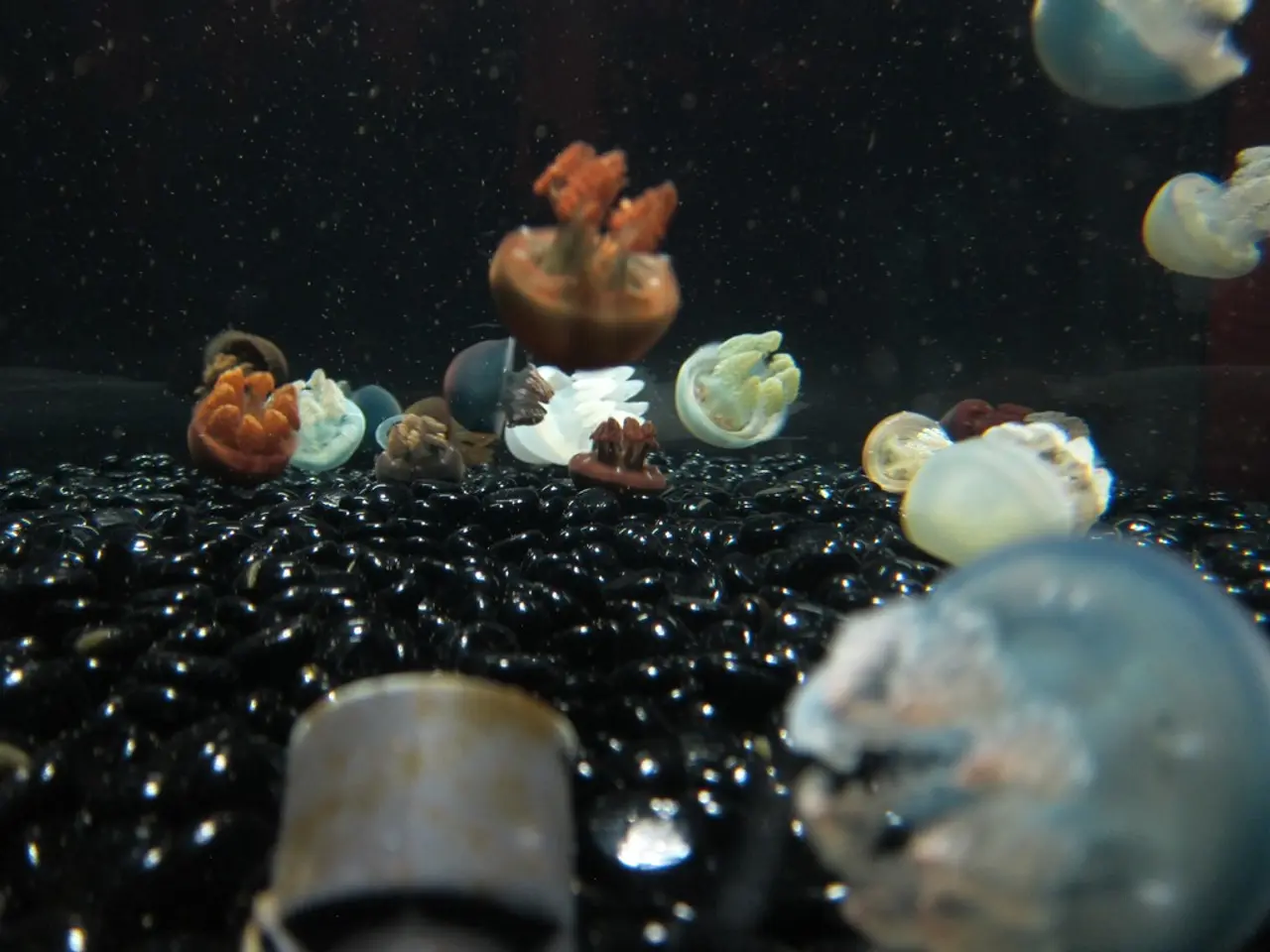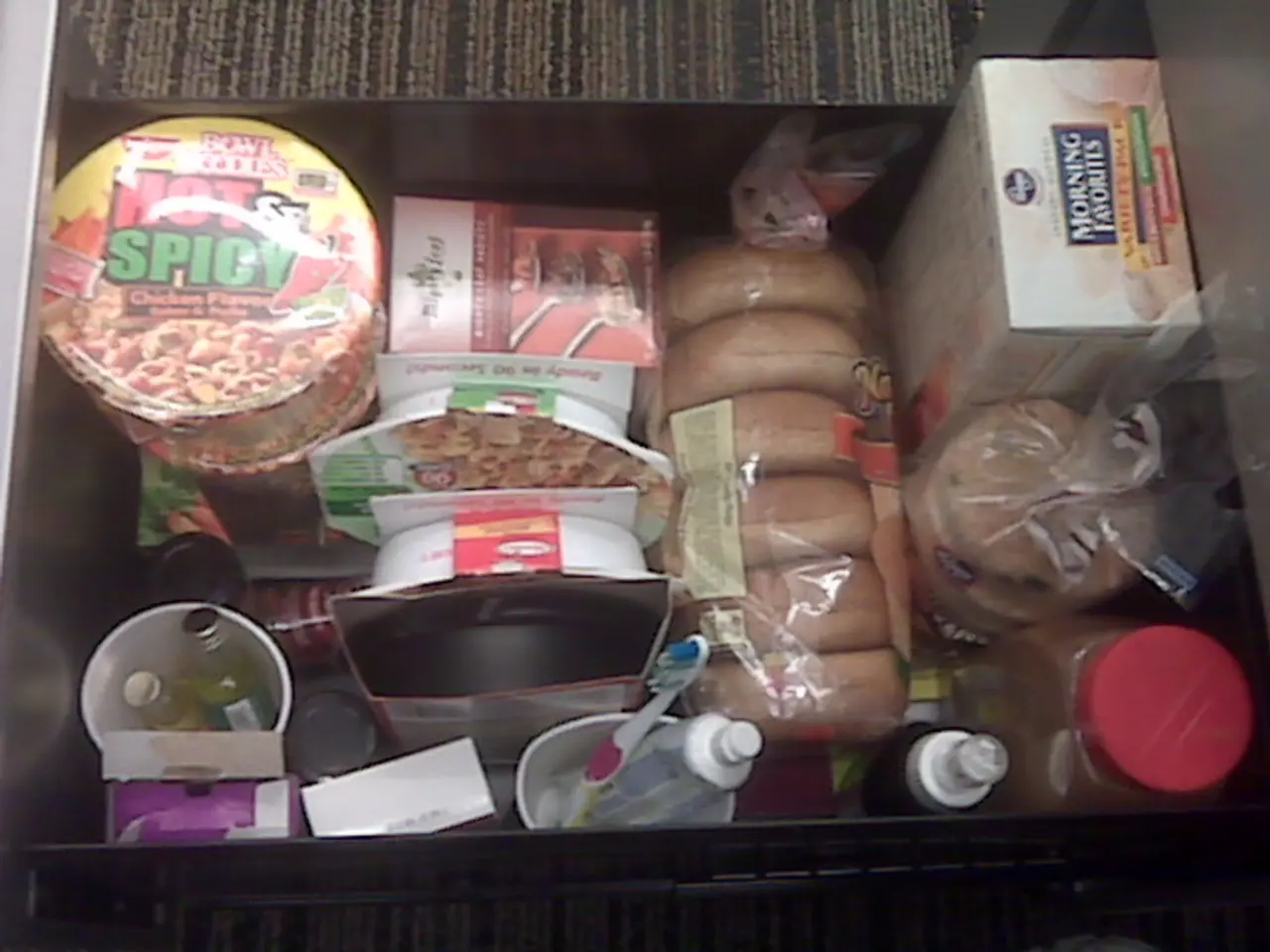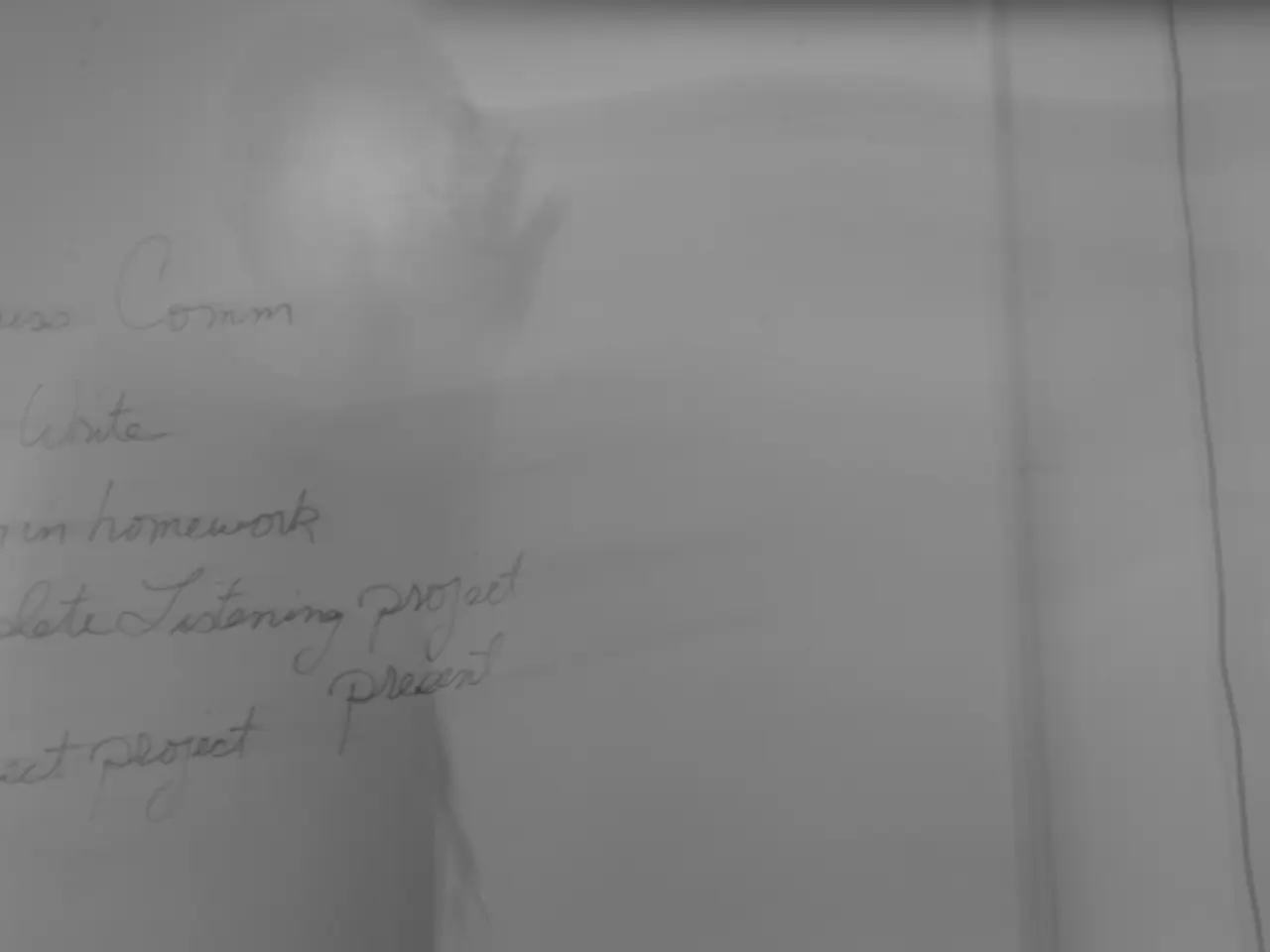Exploring marine-sourced substances: a promising prospect for future developments
The discovery of new antibiotics has significantly slowed since the 1960s, a period during which most of the antibiotics in use today were developed. However, recent research is offering promising avenues to address this issue, with a focus on deep-sea marine sponges and other extreme environments.
In a groundbreaking study, researchers from Flinders University discovered 70 different bacteria in 12 sponge samples from South Australia. These bacteria were active against at least one of 11 human pathogens, including the notorious methicillin-resistant Staphylococcus aureus (MRSA).
This research is part of a broader effort to explore extreme environments, such as deep-sea habitats, which expose microorganisms to unique pressures like high pressure, salinity, low temperature, and reduced UV light. These conditions drive the evolution of unusual bioactive molecules not found in more accessible, shallow environments.
Alexander Fleming discovered penicillin in 1928, a substance produced by a fungus to fight off bacteria, marking the beginning of antibiotic discovery. Today, scientists are looking to bacteria themselves, particularly Actinomycetota, as a rich source of antibiotic products. This is due in part to their highly dynamic genomes, which allow for horizontal gene transfer.
Researchers like Duncan, based at Newcastle University, are looking at Actinomycetota sourced from environments that are similarly extreme, including the deep ocean and the seas around Antarctica. Duncan's lab screens their newly discovered compounds against the ESKAPE pathogens, which are some of the most challenging pathogens to treat.
In a recent expedition, biogeochemist Kate Hendry, a professor at the University of Bristol, embarked on a journey to explore the chemistry of seawater. On board a research vessel, Hendry spent hours navigating remotely operated vehicles across the seabed, gathering samples of marine sponges living in clefts in the seabed and on the slopes of seamounts. Remarkably, 37% of the tested bacteria showed activity against Staphylococcus aureus.
The journey from discovery to drug delivery is a long one, as evidenced by Salinosporamide A, a natural product derived from the actinomycete Salinospora tropica, which was first discovered in 2003 and is still not on the market despite being in clinical trials for several types of cancer.
Advanced molecular tools, such as high-throughput sequencing, mass spectrometry, and metabolomic profiling, are unlocking a wealth of novel antibiotic candidates from deep-sea sponges and other extremophilic microbes. However, challenges in bioproduction and development remain under active investigation.
Scientists hunt for new natural products in extreme environments like the deep sea, the frigid waters of the Arctic Ocean, and at the fringes of hydrothermal vents. The trick to staying ahead in the evolutionary arms race against AMR is to have a constant pipeline of new antibiotics that kill bacteria in new and different ways.
AMR is a major and imminent threat to human life, with an estimated 1.2 million deaths globally attributed directly to AMR in 2019. The current state of research on discovering new antibiotics from deep-sea marine sponges and other extreme environments is highly promising and rapidly advancing, driven by these improved genomic and metabolomic technologies.
[1] Deep-sea sponges as a source of antimicrobial compounds. (2021). Marine Drugs, 19(12), 2646. [2] Antibacterial compounds from marine algae. (2018). Marine Drugs, 16(11), 373. [3] Antibiotic discovery from marine sponges: Challenges, opportunities, and future directions. (2019). Trends in Microbiology, 27(11), 879-890. [4] Synthetic biology for the discovery of novel antibiotics. (2020). Nature Reviews Microbiology, 18(11), 682-695.
- The research on deep-sea marine sponges is revealing new antibiotic candidates, as demonstrated by the discovery of 70 bacteria in 12 sponge samples from South Australia, which were active against at least one of 11 human pathogens, including the notorious MRSA.
- In a bid to stay ahead in the evolutionary arms race against antibiotic-resistant medical-conditions, scientists are exploring extreme environments like space and astronomy, not only the deep sea, but also the frigid waters of the Arctic Ocean, and at the fringes of hydrothermal vents, hunting for new natural products that could revolutionize health-and-wellness, especially in the face of AMR's growing threat to human life.




